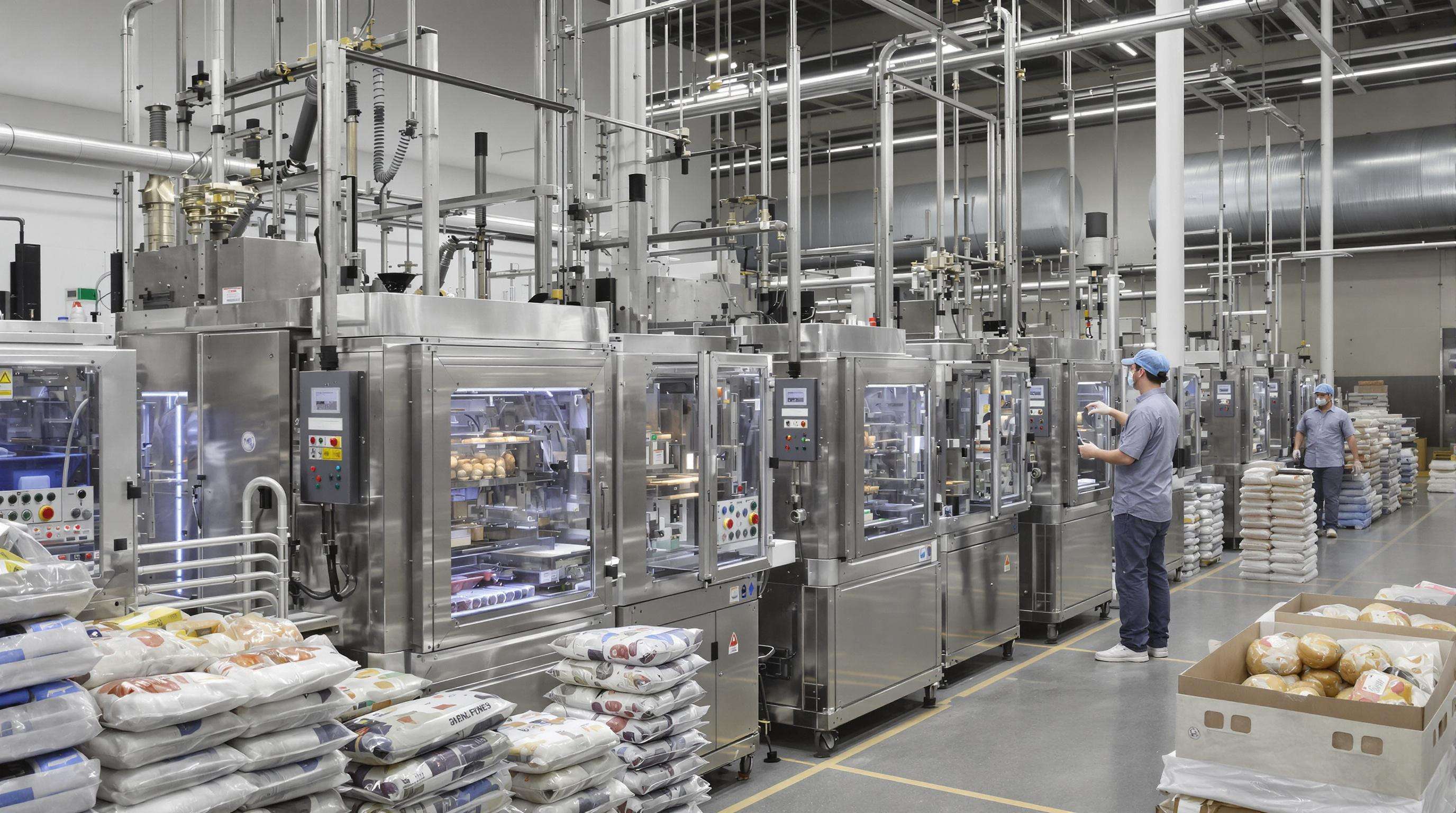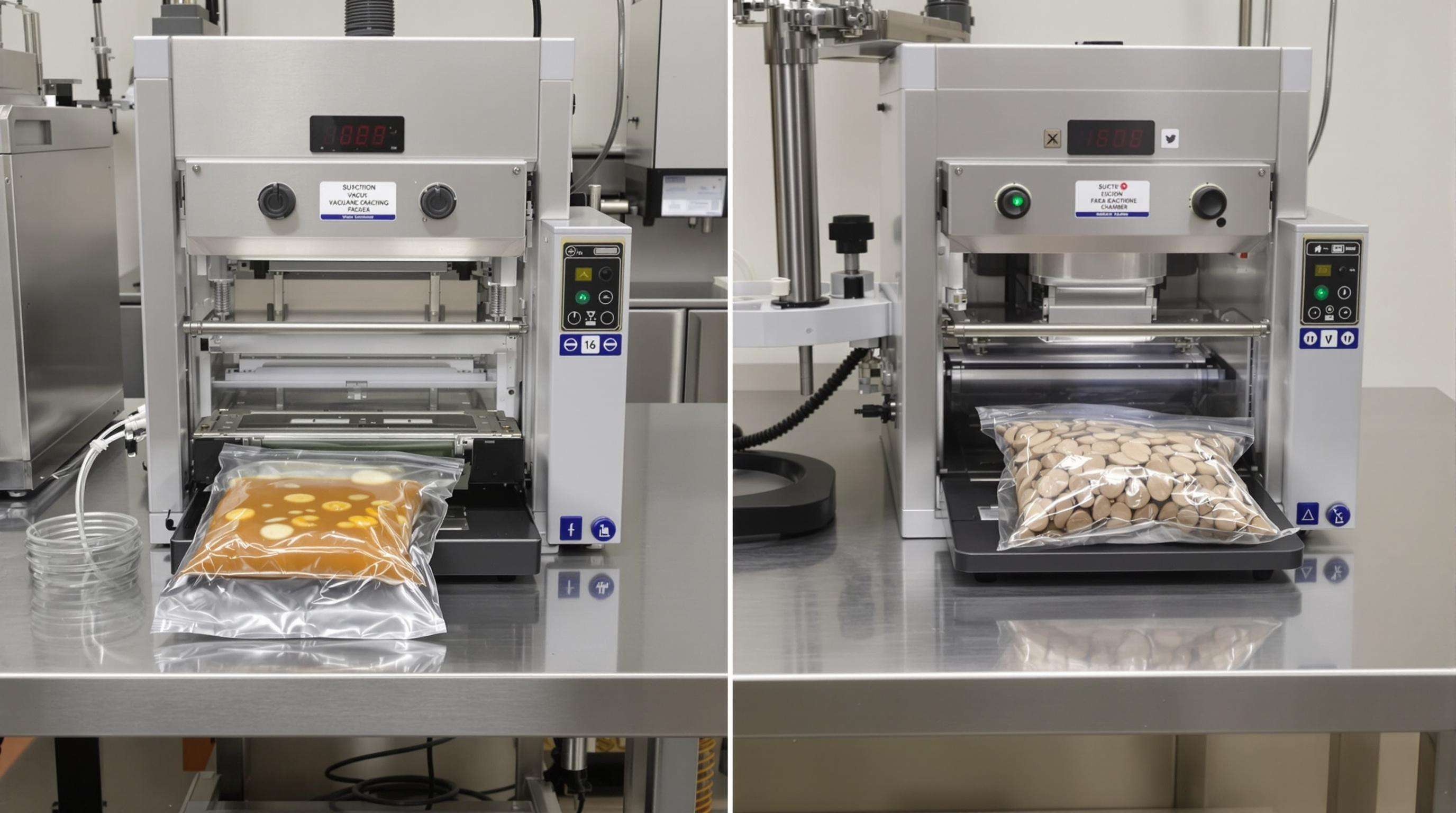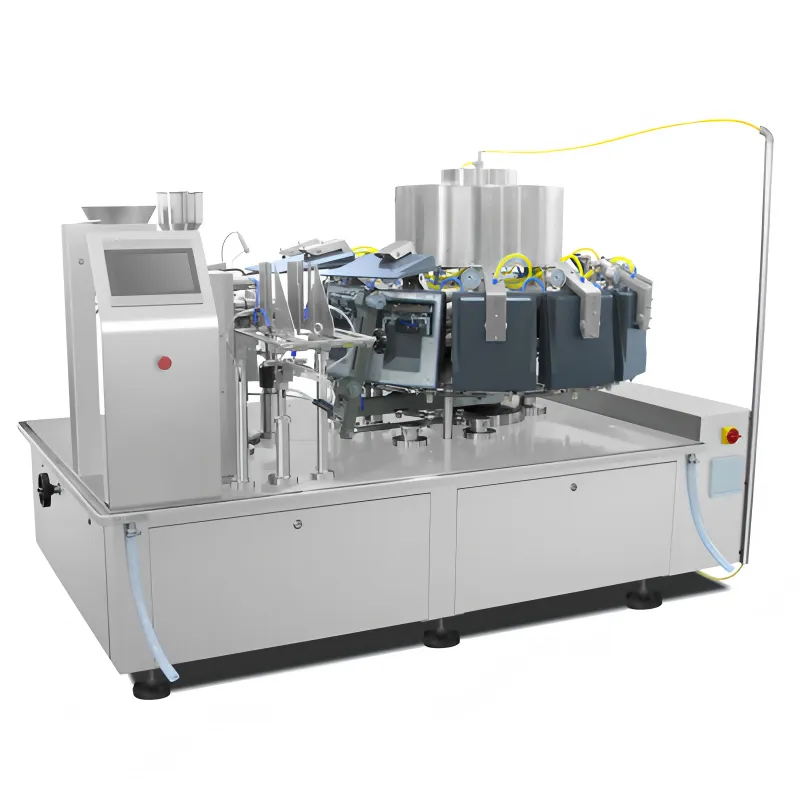Understanding Product Types and Packaging Requirements
Vacuum packaging machine needs to be chosen according to the food properties. Machines that work with liquids (soups), for example, require vertical suction ports so liquid doesn’t spill, and those that package more delicate items (berries or baked goods) should have adjustable pressure controls. A packaging study released in 2023 has revealed that 40% of failed commercial seals are caused by incompatible machine settings for the viscosity and fragility of a certain product. Look for models with adjustable pressure settings and an FDA-approved sealing material.
Production Volume vs Machine Capacity Calculations

Match hourly output needs to machine cycle rates to avoid bottlenecks. Facilities packaging 500 units/hour require sealers with ≥600 cycles/hour capacity. Exceeding 70% of a machine’s rated capacity triples maintenance costs (Food Processing Journal 2024). Calculate minimum requirements:
Daily units ÷ operating hours × 1.2 (buffer) = Minimum cycles/hour Choose manufacturers providing ISO 2859-certified cycle tests.
Special Requirements: Liquid Handling and Delicate Foods
For liquids, dual sealing bars and angled drip trays reduce failures by 78% (Packaging Science Quarterly 2022). Fragile items like cheeses need:
- Pulsed vacuum technology to prevent compression
- Moisture sensors for auto-adjusted seals
- Transparent chamber lids for visual checks
One berry producer cut spoilage by 34% using 5-stage pressure controls and antimicrobial bags.
Chamber vs Suction Vacuum Packaging Machines Compared
Operational Mechanics and Packaging Quality Differences

Chamber machines reduce pressure below 10 mbar in a sealed enclosure, ideal for liquids like soups. Suction systems extract air via external nozzles, struggling with moist/delicate items.
| Metric | Chamber Machines | Suction Machines |
|---|---|---|
| Seal Consistency | 99% | 85–90% |
| Liquid Handling | Minimal spillage | High risk |
| Pressure Achieved | <10 mbar | 50–100 mbar |
Chamber systems extend shelf life by 30–50% via superior oxygen removal.
Cost-Benefit Analysis for Commercial Applications
Chamber machines cost 2–3x more upfront ($15k–$50k vs $5k–$20k) but offer long-term savings:
- Lower maintenance (500+ cycles/day vs 200–300)
- Less waste (3% vs 10–15% failure rate)
- Energy efficiency (15–20% lower kWh/cycle)
Operations packaging 500 units/day achieve ROI in 18–24 months. Small businesses (<200 units/day) may prefer suction machines despite higher per-unit costs.
Key Features to Prioritize in Commercial Vacuum Packaging Machines
Sealing Effectiveness and Failure Rate Statistics
72% of machine failures stem from seal issues, causing $28k yearly losses (2023 audit). Opt for models with:
- Dual-seal bars and pressure sensors (≥95% vacuum consistency)
- Self-adjusting heat elements for bag thickness (0.05–0.15mm)
- Redundant pumps maintaining 5–10 mbar oxygen levels
Multi-Functional Capabilities: Sous Vide & Marinating
Advanced models integrate sous vide (40–90°C ±0.5°C) and marinating (3.8x faster infusion), cutting equipment needs by 40%.
Durability Testing for Heavy-Use Environments
High-volume machines should endure 120+ cycles/hour with <2% degradation after 40,000 cycles (ISO 9001:2015). Key benchmarks:
| Test Parameter | Industrial Standard | Commercial-Grade |
|---|---|---|
| Continuous operation | 72-hour test | 0% failure rate |
| Corrosion resistance | Salt spray | 2,000+ hours |
| Component lifespan | Sealing bars | 5–8 years |
Stainless steel (316L) housings save $18k/3 years in humid conditions versus aluminum.
Performance Evaluation by Food Type
Moisture Control in Liquid-Containing Products
Models with horizontal sealing bars and triple-seal tech maintain 89% moisture retention vs 72% in standard packaging over 14 days.
Preservation Effectiveness for Perishable Goods
Vacuum sealing removes 99% of oxygen, extending shelf life:
- Leafy greens retain 40% more antioxidants after 10 days
- Salmon lasts 9 days refrigerated (vs 3 days unpackaged)
- Modified atmosphere options (nitrogen/CO₂ blends) enhance results
Cost Analysis of Industrial Vacuum Packaging Machines
Initial Investment vs Long-Term Maintenance Costs
Commercial units cost $50k–$150k but save 18–22% energy (EnergyStar 2022). Maintenance averages $2k–$5k/year, with premium systems seeing 40% fewer failures over 5 years (Ponemon 2023).
ROI Calculation Framework
Factor in:
- Labor (60–70% reduction in repetitive tasks)
- Material waste (25–35% less film usage)
- Downtime (<1% failure rate ensures 98% uptime)
ROI formula:
(Annual Savings – Maintenance Costs) / Initial Investment = Years to Break-Even
Most processors break even in 18–34 months.
Expert Recommendations: Top Models
Budget-Friendly Options for Small Businesses
External sealers suit dry goods in poly bags (<12" wide), with automatic bag detection reducing training time.
Mid-Range Workhorses for Medium-Scale Operations
Chamber machines with dual seals and moisture controls offer 40% faster cycles for liquids (2024 Food Packaging Automation Research).
Premium Solutions for High-Volume Production
Industrial systems (1,000+ units/hour) feature robotic loading, AI quality control, and HACCP compliance for meat/frozen food facilities.
FAQ
What factors should I consider when choosing a vacuum packaging machine for liquids?
A vacuum packaging machine for liquids should have vertical suction ports, dual sealing bars, and angled drip trays to reduce spillage. Look for models with these features to prevent failure when handling liquids.
How do I match production volume to machine capacity?
Calculate your daily production units, divide by operating hours, and multiply by a buffer (e.g., 1.2) to get the minimum cycles per hour needed from your machine.
What are the main differences between chamber and suction vacuum packaging machines?
Chamber machines are more suitable for liquids and offer higher seal consistency, minimal spillage, and better oxygen removal. Suction machines struggle with moist or delicate items.
Why are chamber machines more cost-effective in the long run?
Despite higher upfront costs, chamber machines have lower maintenance expenses, reduced waste, and greater energy efficiency, leading to quicker ROI for high-volume operations.
Table of Contents
- Understanding Product Types and Packaging Requirements
- Production Volume vs Machine Capacity Calculations
- Special Requirements: Liquid Handling and Delicate Foods
- Chamber vs Suction Vacuum Packaging Machines Compared
- Operational Mechanics and Packaging Quality Differences
- Cost-Benefit Analysis for Commercial Applications
- Key Features to Prioritize in Commercial Vacuum Packaging Machines
- Sealing Effectiveness and Failure Rate Statistics
- Multi-Functional Capabilities: Sous Vide & Marinating
- Durability Testing for Heavy-Use Environments
- Performance Evaluation by Food Type
- Moisture Control in Liquid-Containing Products
- Preservation Effectiveness for Perishable Goods
- Cost Analysis of Industrial Vacuum Packaging Machines
- Initial Investment vs Long-Term Maintenance Costs
- ROI Calculation Framework
- Expert Recommendations: Top Models
- Budget-Friendly Options for Small Businesses
- Mid-Range Workhorses for Medium-Scale Operations
- Premium Solutions for High-Volume Production
- FAQ

